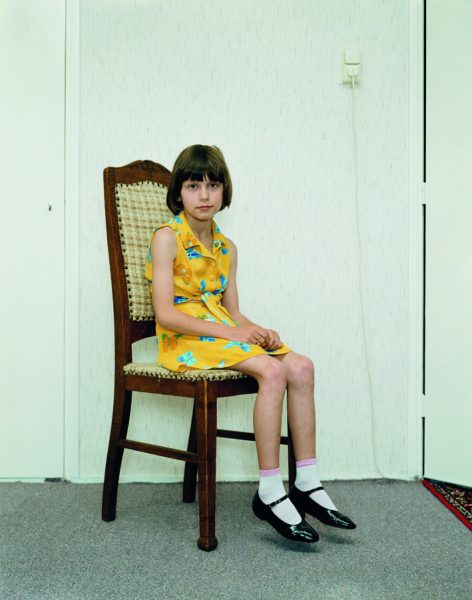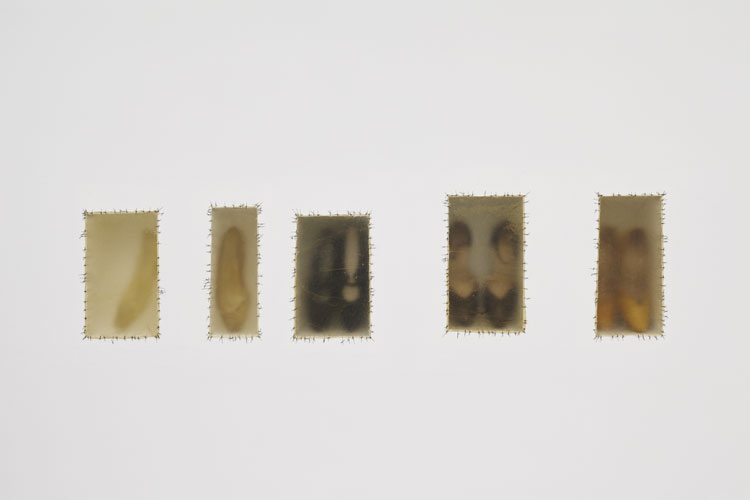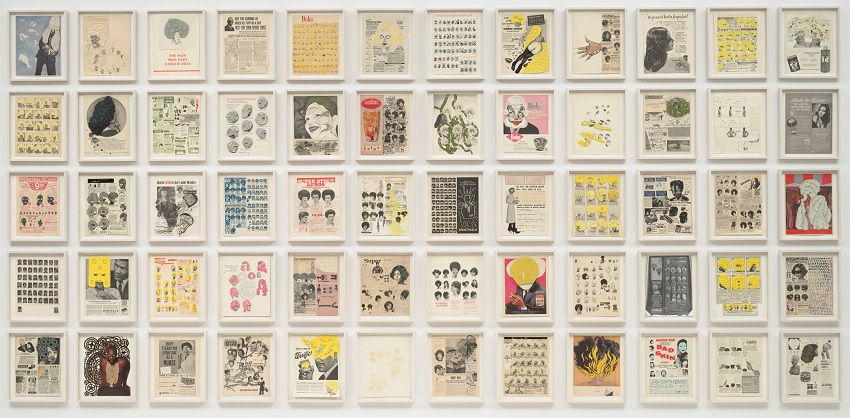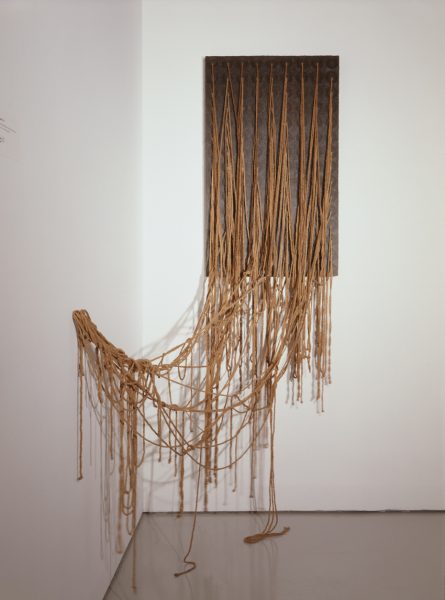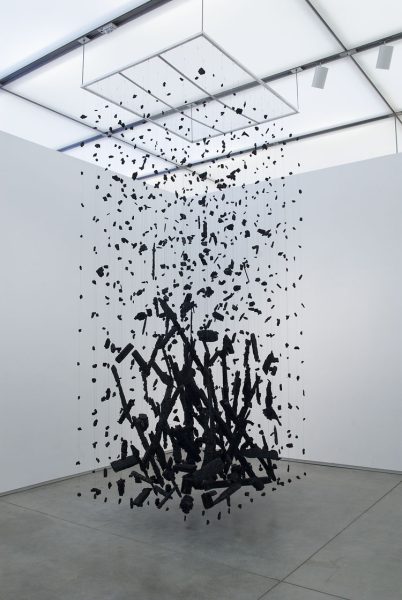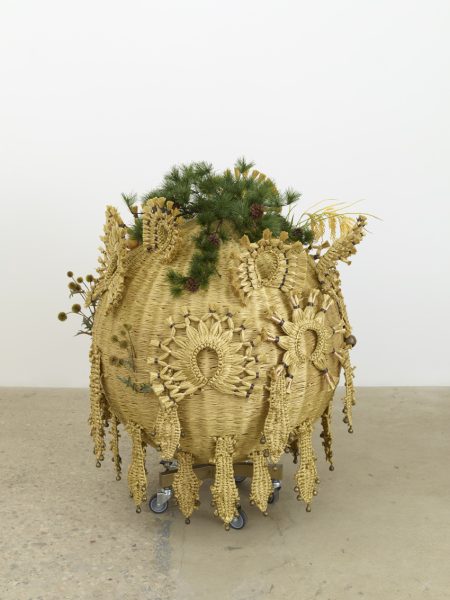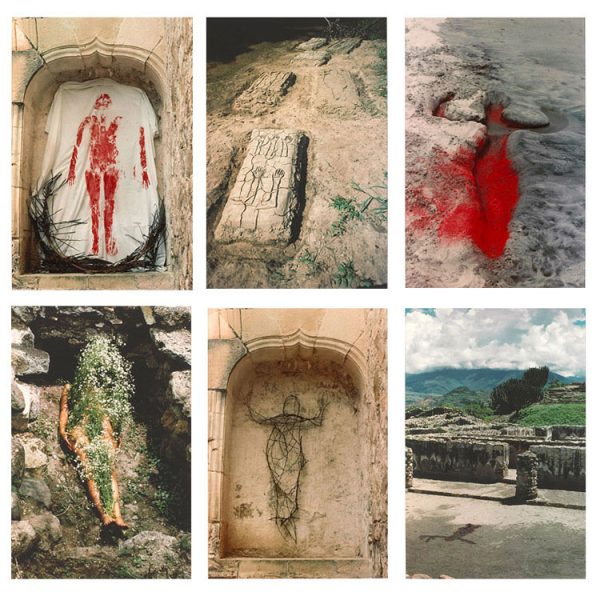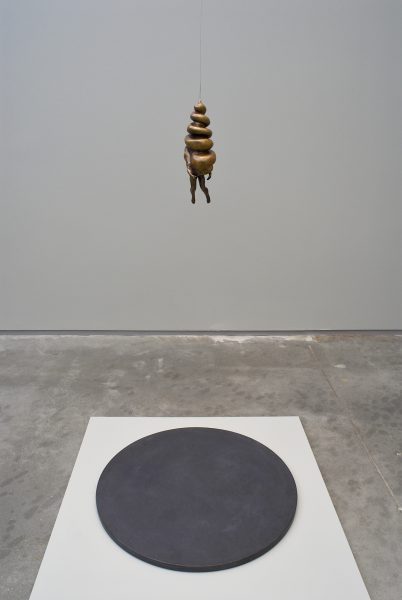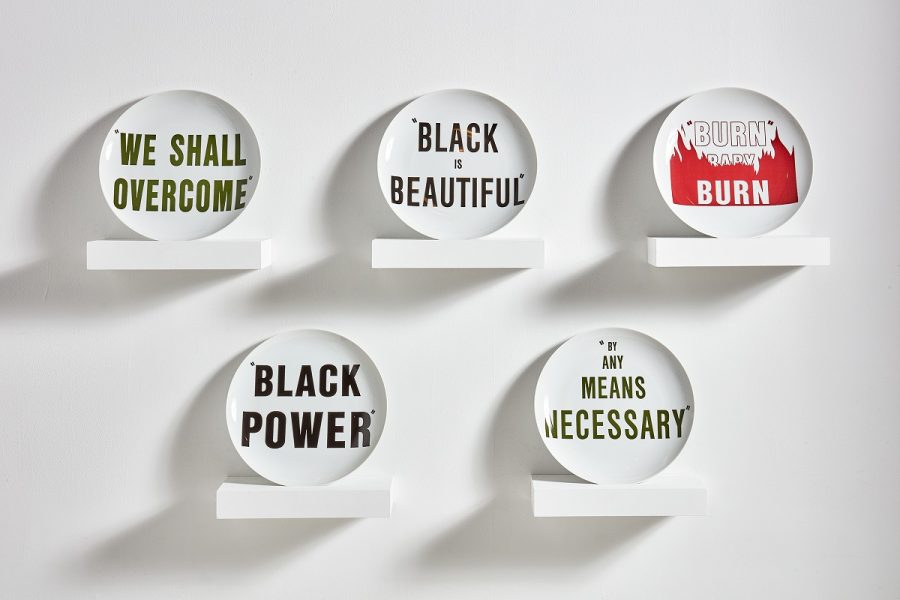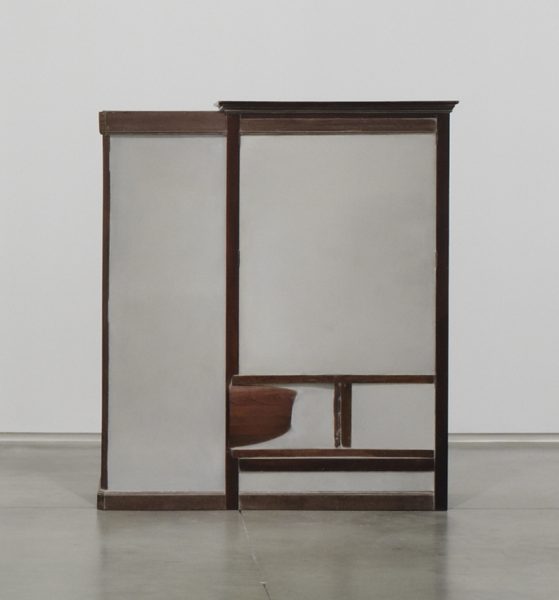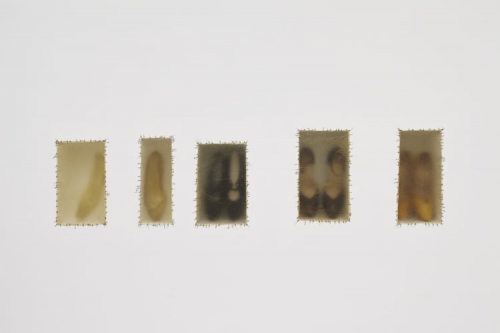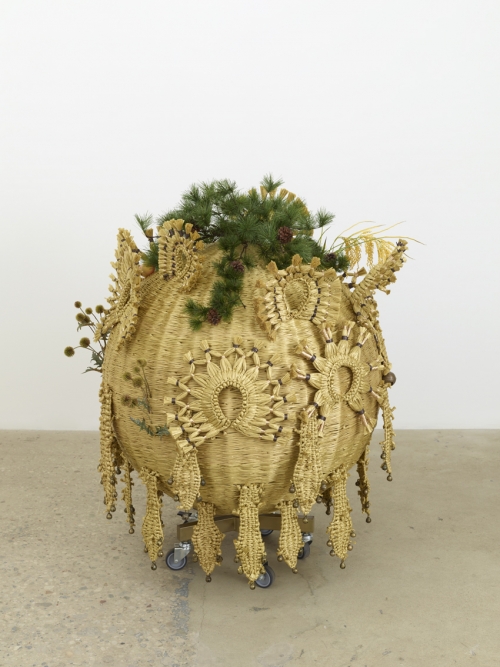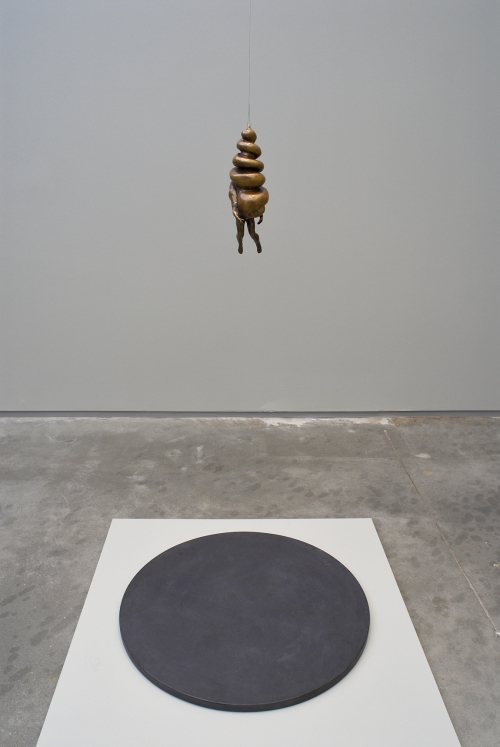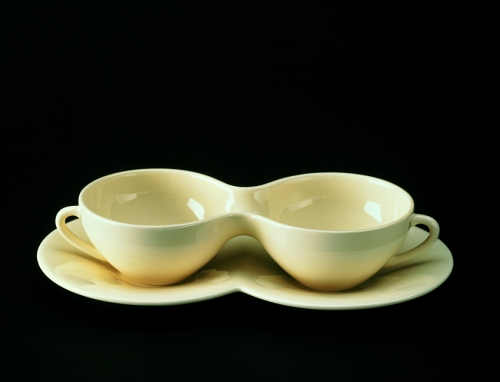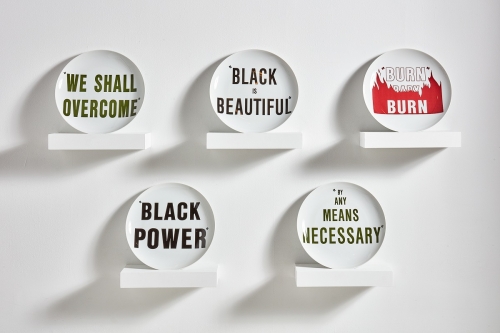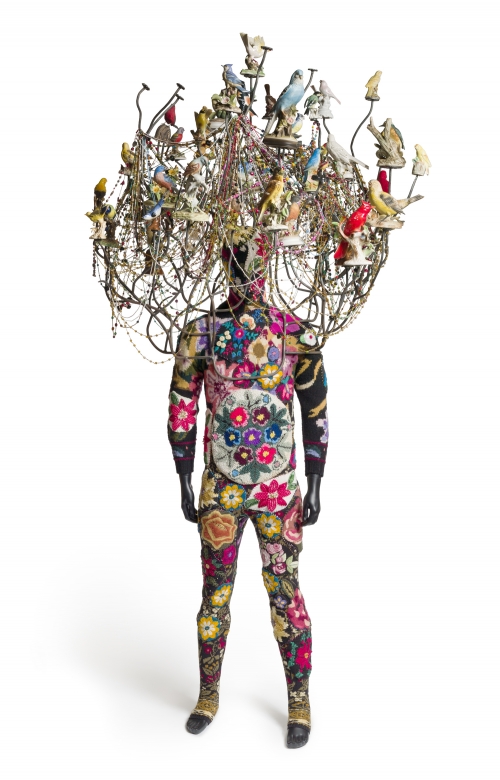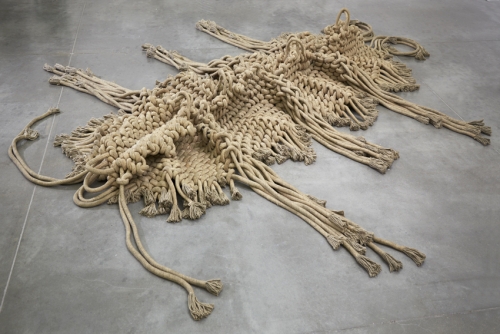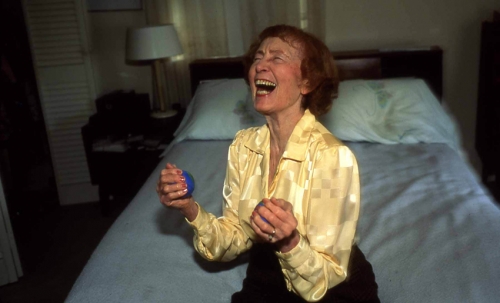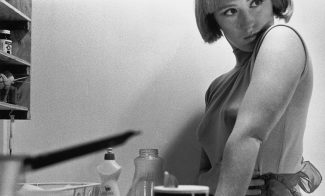As we celebrate the ICA collection’s first 10 years in First Light: A Decade of Collecting at the ICA, staff members have been trading stories about which works have made the biggest impressions on them over the years. Here ICA staff talk about which works in the collection have moved, impressed, or stuck with them the most.
Almerisa series by Rineke Dijkstra
I’ve always been fascinated by photography’s particular relationship to time—the present in the moment of its taking and then, almost immediately, the past, history, and death. It’s like a life cycle in one image. Rineke Dijkstra’s portrait series of a Bosnian refugee named Almerisa captures a child growing up and ends with a photo of Almerisa holding her own child. When I first saw the series in Dikstra’s survey exhibition at the Guggenheim, I was struck by how each image perfectly captures a phase of adolescence through very simple means: the discomfort of being twelve, the thin confidence of being sixteen. The pose and outfit (always chosen by Almerisa) convey so much about the emotional terrain of childhood. I wish all of our school pictures could possess such truth and intimacy rather than the generic quality that comes from a request to “smile” and quickly move on. —Ruth Erickson, Associate Curator
Atrabiliarios by Doris Salcedo
I am haunted by Doris Salcedo’s Atrabiliarios. When I first saw it a few years ago, it felt like a punch in the stomach. Since then, it is like tinnitus in my ear — a constant background hum reminding me that all is not well. The work is almost invisible as it recedes into the wall, but it screams of pain and injustice. The delicacy of the stitching and the shoes of the disappeared women belie the violence that was their fate. They are quiet now, but I can’t help but hear them. —David Henry, Bill T. Jones Director of Performing Arts
DeLuxe by Ellen Gallagher
Raised in an environment where black men and women were not well represented outside of their community through verbal and visual signifiers, I find DeLuxe a representation of and a confrontation against this. I appreciate Gallagher’s ability to draw me in through clever appropriation and collaged accoutrement—glitter, crystals, foil paper, and gold leaf—in order to confront this black representation and give way to the possibility of a new representation. DeLuxe is beautiful and dark all at once. —Liana Mestas, Development Coordinator
Ennead by Eva Hesse
I have always admired the brilliance and tenacity of Eva Hesse. Ennead represents to me a radical approach to making and experiencing art. It bombards my mind and eyes with questions regarding its materials, construction, and placement. Ennead is also a personal reminder of the artist’s strength. The work was created at a pivotal time in her life, between an extended trip to Germany — a place she had been forced to escape — in 1964 and her untimely death in 1970. Through works like Ennead, the creator and her boldness persevere. —Monica Garza, Director of Education
The Intermediate – Inceptive Sphere by Haegue Yang
Haegue Yang’s The Intermediate—Inceptive Sphere (2016), which recently entered our collection, is both visually and conceptually compelling and a work one must experience firsthand. You have to crouch down to get a sense of the piece, its tactility, and the rich textures of the materials. Though near to the ground, the work has a palpable presence, as it poetically expounds upon the global, exploring the supposed, and fraught, East/West binary. Collecting and employing materials ranging from the banal, here plastic straw, to folk or ritualistic objects, such as a Korean bride’s headpiece and bells used in shamanistic rituals, Yang creates an “intermediate” space, somewhere between the real and artificial, civilization and nature, as well as the human and spirit worlds, and a space you’re invited to enter and engage with. —Jessica Hong, Curatorial Assistant
Silueta Works in Mexico by Ana Mendieta
It is incredible to work for a museum that has one of my all-time favorite works of art in its collection: the Silueta Works in Mexico by Ana Mendieta. In this series, Mendieta blends performance and photography, human and nature, presence and absence in a series that makes you reflect on your relationship to the earth. In these sublime images, Mendieta’s immersion into the landscape of Mexico and the traces that remain show how powerful the forces of nature are in comparison to humanity. Ana Mediata’s work has had a major influence on my own art practice and her work continues to inspire me today. —Chris Hoodlet, Marketing Manager
Spiral Woman by Louise Bourgeois
In a 2008 documentary, artist Louise Bourgeois, then 96, quipped in her thick French accent, “My emotions are inappropriate to my size.” I’ve never forgotten that line. Small in stature but bursting with chutzpah, Bourgeois said making art was a way of taming her demons.
Encountering Bourgeois’s work is like a kick in the gut. Part of a series Bourgeois continued over decades, this Spiral Woman, with its diminutive female figure entombed and twirling suspended in midair, pulses with the forces that run through all the late artist’s evocative work: emotion, pain, sexuality, trauma, need, sensitivity, anger, compassion. Its honesty and intensity are infectious, and refreshing. An outlet for the famously tempestuous artist, her impassioned work lives on as a kind of salve for viewers as well. —Kris Wilton, Associate Director of Creative Content and Digital Engagement
Hanging Fire by Cornelia Parker
Cornelia Parker’s Hanging Fire, suspended at the entrance of the show, introduces a mode of thinking critical to the collection. More than half of the works in the ICA’s collection are by women, and many pieces in First Light tackle issues of race, gender, violence, and the related politics of art-making. A well-composed moment of explosion, Hanging Fire deconstructs the dark nature of the fire and extracts beauty from its charred wood orbits. Our contemporary moment of deconstructing norms and systems of oppression requires us to collectively pause, in the midst of the chaos of pain and misunderstanding, to discuss and think, and feel empathy. Given the charged nature of some of the works on view, I find Hanging Fire to be a meditative place to begin. —Lisa Purdy, Visitor Assistant
T42 by Mona Hatoum
The impact T42 had on me when I saw it for the first time was out of proportion with its diminutive size and delicate aesthetic. The punny title makes you feel as though you’re in on the joke. You then realize that the joke may in fact be on you, on the expectations and assumptions of coupling, a coupling that perhaps creates codependence, eradicates individuality, and, presented in this manner, borders on the ridiculous. T42 is play on the hypercivilized teatime that’s almost too intimate to feel comfortable. A graceful combination of sweet and discomforting, this piece makes me wonder, is there really a way we can both negotiate this vessel lovingly and fairly? Can it really go right? —Kate McBride, Marketing Assistant
Untitled by Kerry James Marshall
Kerry James Marshall’s five white, porcelain dinner plates from the multiple Untitled (1998) are printed with Civil Rights slogans such as “We Shall Overcome” and “Black is Beautiful.” Art historically the plates evoke Judy Chicago’s iconic feminist installation The Dinner Party (1974–79), but their political thrust makes me think of the meme that circulated around the 2012 election with African-American laborers next to a photo of the White House and the text, “We Built It.” Who are our objects of leisure and consumption made by and for? Were they made according to ethical labor practices, and if they could speak—as Marshall’s plates appear to—what stories would they tell? —Sam Adams, Curatorial Fellow
Untitled by Doris Salcedo
Doris Salcedo’s untitled work of 1998 is heavy, her manipulation of familiar furniture utterly negating any sense of home and safety. It is akin to piecing together a monument, making the moment of recognition kinetic. At once the question shifts from “What is this?” to “What happened?” —Frank Redner, Visitor Assistant Lead
Rückenfigur by Glenn Ligon
One of my favorite works in the ICA Collection is one I’ve not yet seen installed in Boston. I first encountered Glenn Ligon’s Rückenfigur at the Whitney in 2011. Soon after, ICA Trustee Bridgitt Evans and her husband Bruce promised this seminal work to the ICA. Our collection has and continues to be predominantly comprised of gifts of art from a generous group of individuals who believe that works of great importance – like this – belong in the public realm for audiences to enjoy for generations to come. Rückenfigur is a simple neon sign that reads “America.” The title, “back figure,” is echoed in both the darkened typeface that creates the illusion of approaching the sign from behind, and in the complex interconnectedness of racial and national identity that our country navigates. I spent a long time in front of that work at the Whitney, and have thought of it often since, particularly over the past year. For me, Ligon’s neons evoke equal parts despair and hope; overwhelming the viewer with bold gestures toward the unfulfilled promise of the United States while simultaneously acknowledging, if not insisting, that the viewer is herself an active participant in shaping its future. I still remember the charged feeling in the room, and in my stomach, when the ICA’s Board of Trustees approved the acceptance of this work, Ligon’s first in our collection. It seemed incredibly relevant then, and perhaps more so now. I look forward to seeing it take its place in our galleries in the years to come. —Katie Mayshak, Director of Development
Soundsuit by Nick Cave, Inchworm by Francoise Grossen, and Lil Laughing, Swampscott, MA by Nan Goldin
I love this trio of works. For a time they were relatively near each other in the gallery, and once I connected them, they just made me smile. Each has a big personality on their own, but together they turn into a vibrant motley crew. I created the following activity that the Teen Arts Council will do this week with all three artworks… “These three pieces went on a cross-country road trip together. Where did they stop along the way? What did they do? Who drove? Who was the DJ? What music did they play? What was the final destination of their epic journey and why? Use your answers to these questions to create a visual “journey map” of their trip.” —Carlie Bristow, Teen Programs Assistant
